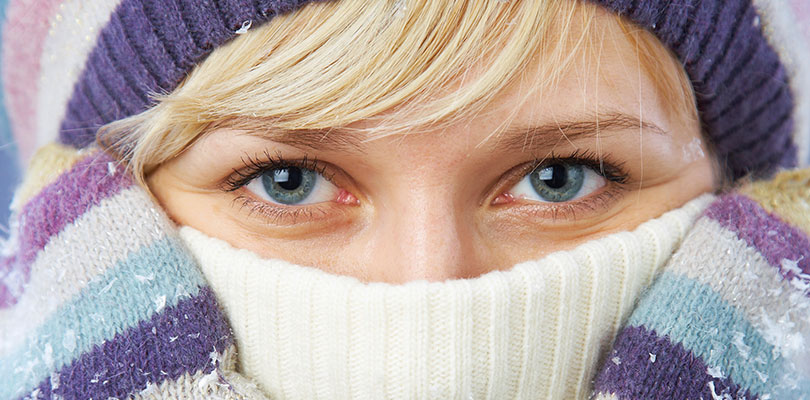Understanding the Connection Between Asthma and Changes in Weather
Asthma is a long-term lung condition that causes narrowing of the airways and inflammation. The combination of swelling and constriction makes it hard to breathe. Different things can trigger an asthma attack. In some people, weather can affect their asthma symptoms.
Continue reading below to find out how asthma and changes in weather are related, and what you can do to prevent flare-ups.
How Does Weather Affect Asthma?
Weather can affect the frequency and severity of asthma symptoms for some people. Since everyone is different, the type of weather that increases symptoms may vary.
Airway Irritation
Asthma symptoms may increase due to specific kinds of weather for a few reasons. In some cases, the weather itself can irritate sensitive airways. For example, cold, dry weather, which often occurs in the winter, may lead to a flare-up of asthma symptoms. The irritation may cause narrowing of the airways, which can then trigger an asthma attack.
While we may think cold and rainy weather causes the most problems for people with asthma, that is not always the case. Hot weather can also be a problem for some people with asthma. Hot weather can increase air pollution, which may irritate the airways, causing an asthma flare-up.
Allergen Abundance
In other instances, weather can lead to certain environmental conditions that promote allergens and lead to symptoms. For instance, wet weather may encourage mold growth, which is a frequent asthma trigger. Windy weather may spread pollen through the air, which is another typical allergen that may increase asthma symptoms.
Sudden changes in weather can also be problematic for some people with asthma. For example, going from hot weather to cooler weather quickly may lead to an increase in symptoms. It is not entirely clear way rapid shifts in weather may trigger asthma symptoms. Some research suggests that a change in barometric pressure may be to blame.
Changing Weather and Symptoms
When weather triggers an increase in asthma, symptoms may develop shortly after exposure to the conditions. For people who have exercise-induced asthma, exercising in certain weather conditions can cause a sudden asthma attack.
Typical asthma symptoms that may develop:
- Wheezing
- Chest tightness
- Coughing
- Shortness of breath
Which Seasonal Transitions Are Most Risky for Asthma Symptoms?
Since everyone has different asthma triggers, there is not one seasonal trigger that is most risky for everyone with asthma. For instance, some people do better in warm weather while others may not.
But in general, according to the Asthma and Allergy Foundation of America, hospitalizations for asthma tend to go up in September. The uptick in hospitalizations for asthma in September may be due to the change in weather, increase in allergens, or both.
In certain parts of the country, September brings sudden changes, including cooler weather. It also may mean fluctuating weather conditions. For instance, one day may be hot and summerlike, and the next cool.
Ragweed also peaks in September in several parts of the country. Ragweed is one of the most common allergens that can trigger asthma attacks.
The cold, wind and snow of winter will slow anyone down; but asthma in cold weather can quickly turn into danger.
Tips for Coping With Weather Changes
You cannot control the weather outside. But there are still things you can do to deal with weather changes and reduce your risk of asthma attacks. Consider the following suggestions:
Track Your Symptoms
Keep a log of your asthma symptoms to try identifying the riskiest weather that triggers an increase in asthma. Learning your asthma triggers is the first step in reducing exposure and keeping symptoms at bay. It’s easier than ever to track asthma symptoms with different phone apps.
Check Air Quality
Before heading out for the day, it is helpful to check the air quality in your area. The weather, temperature and pollution levels all affect the air.
According to the Environmental Protection Agency, an air quality index over 101 is considered unhealthy for people with asthma. You can check the air quality in your area at airnow.gov. On days when air quality is poor, try to stay inside as much as possible.
Limit Outdoor Activities in Peak Trigger Weather
Once you identify the type of weather that leads to an increase in asthma symptoms, try to stay inside as much as possible on peak weather days. Keep doors and windows closed and run your air conditioner instead. Also, avoid exercising outdoors.
Cover Your Mouth and Nose in Cold Weather
Cold, dry air can irritate the airways in people with asthma. When going outside in the cold weather, wrap a bandana or scarf around your mouth and nose to warm the air before it hits your lungs.
When Humid, Do Outdoor Activities in the Morning
Hot, humid weather may increase air pollution. Moist air also feels harder to breathe in. When the temps increase in the summer, try to do most of your outdoor activities in the morning when the weather is cooler and air quality is better that later in the afternoon.
Carry Your Fast-Acting Inhaler
It’s vital to have a fast-acting inhaler such as albuterol with you to use in case the weather triggers asthma symptoms. If you find you are using your fast-acting inhaler frequently without relief, talk with your doctor to determine the best treatment options.







